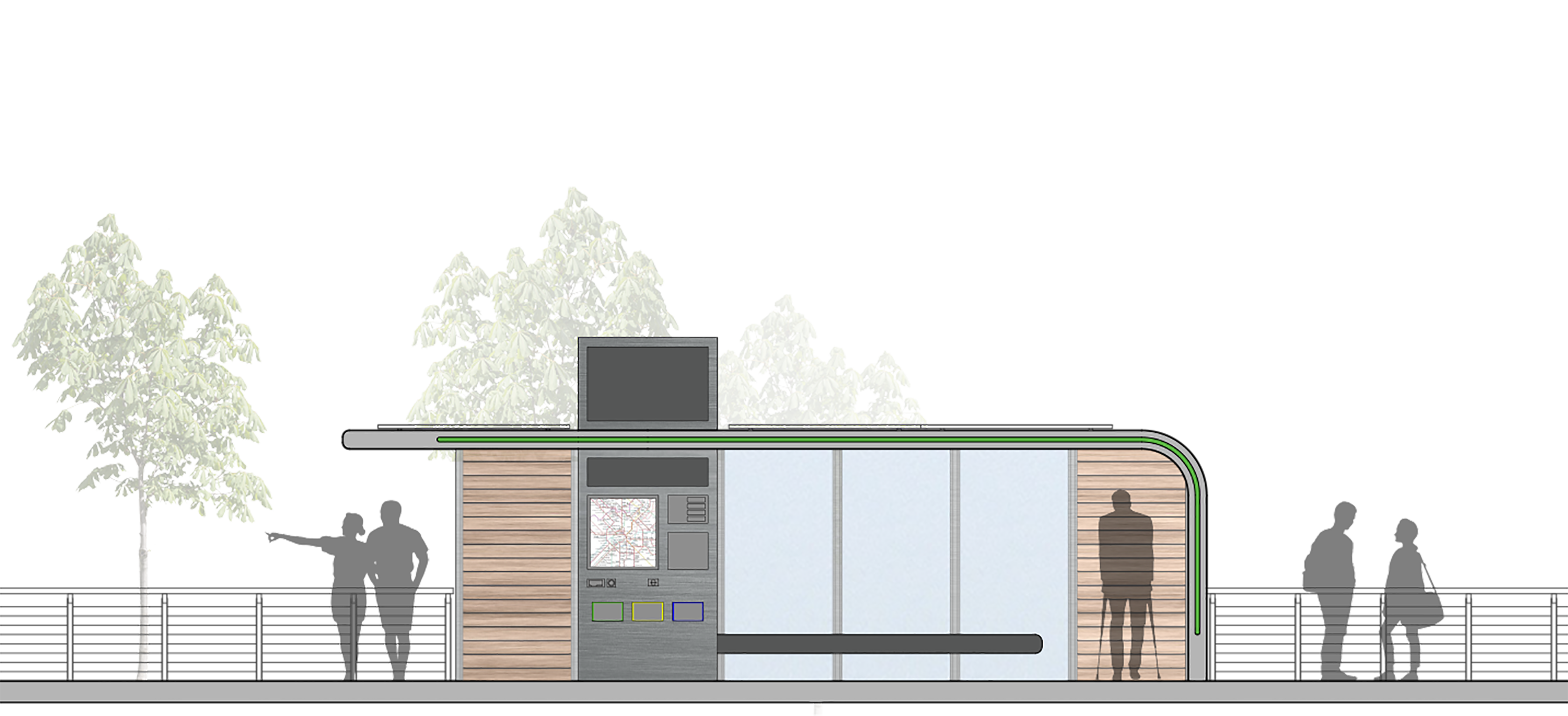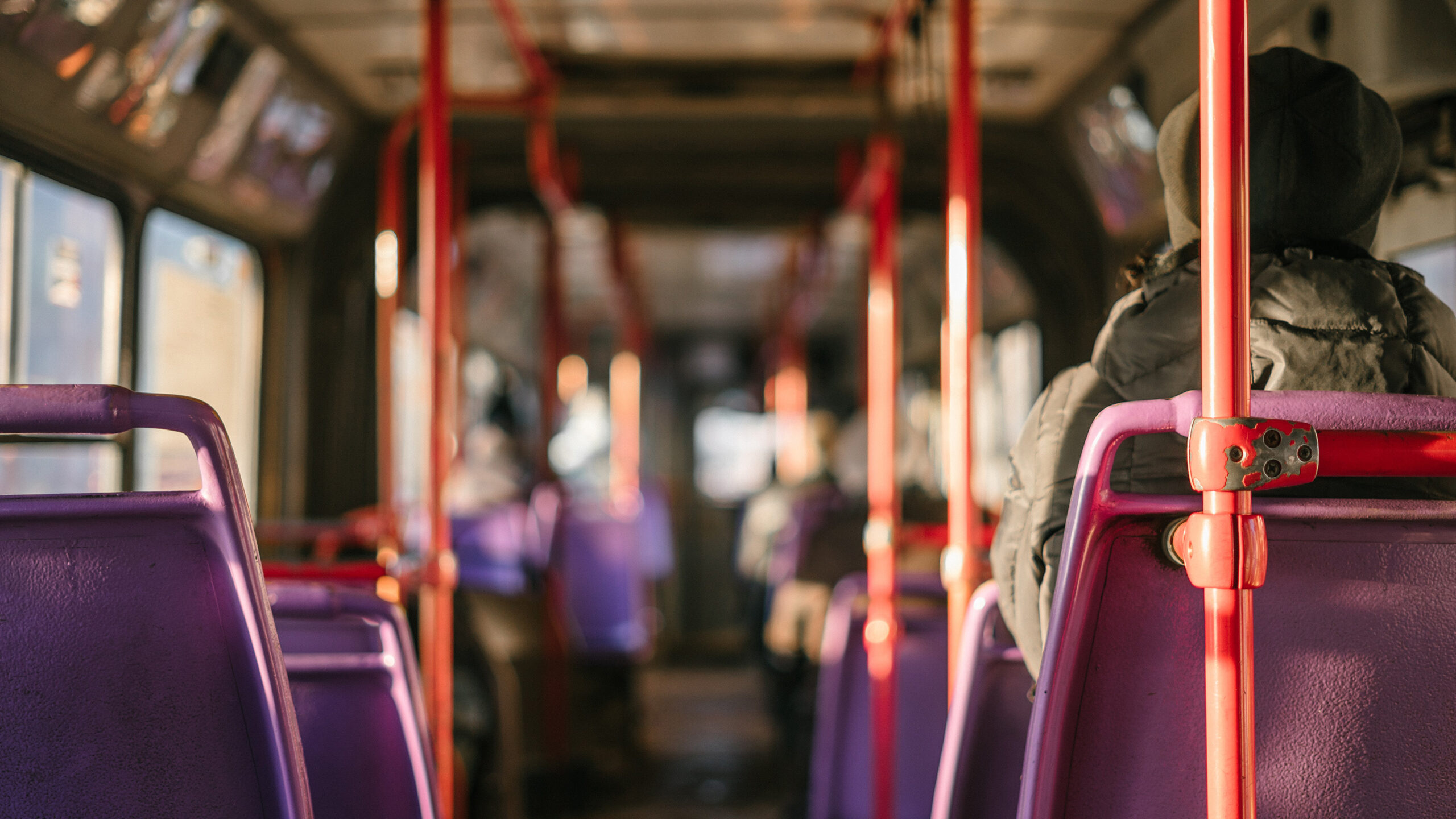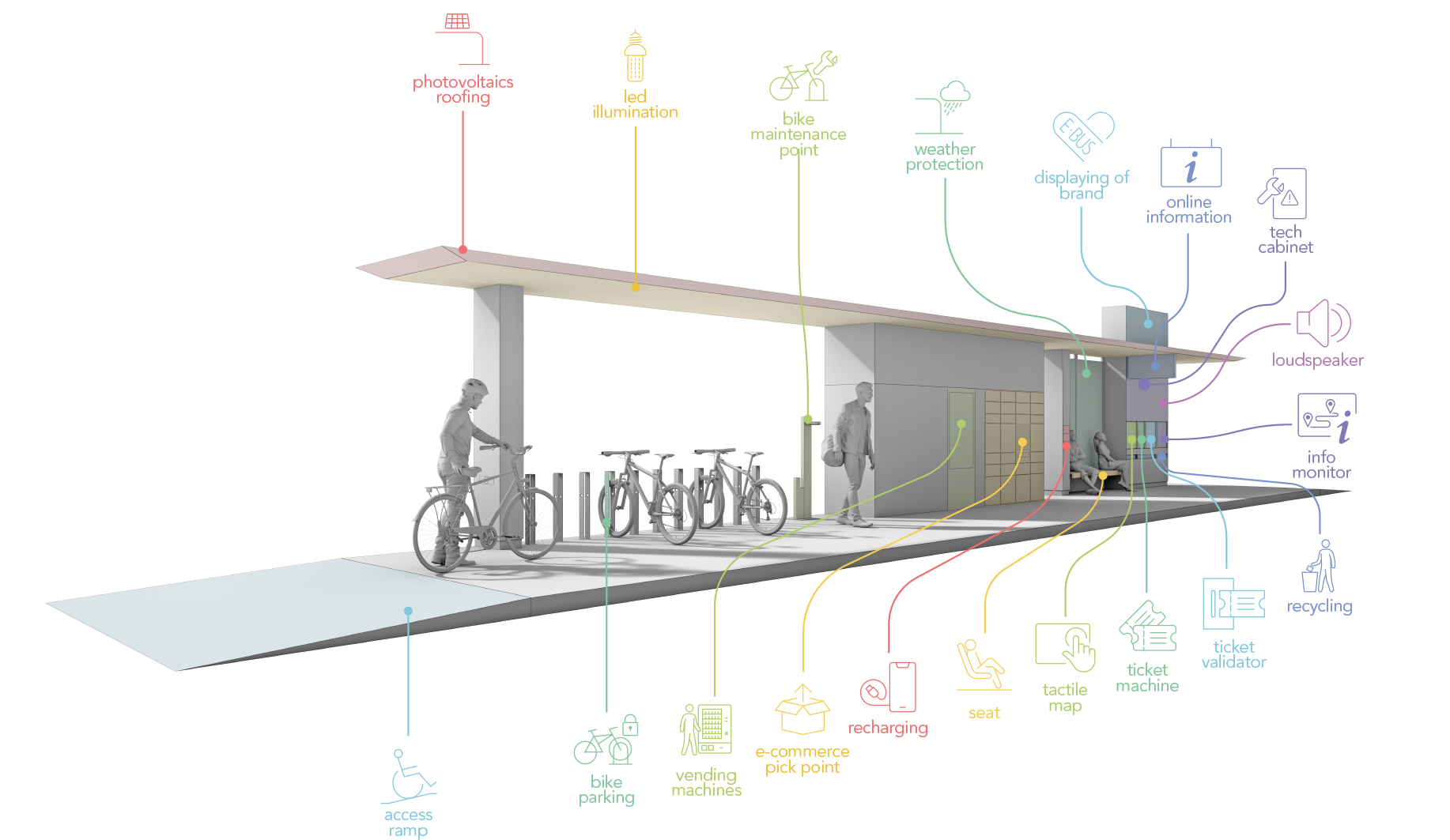The Bologna and Florence Bus Rapid Transit
Sustainable mobility in metropolitan areas
The Bus Rapid Transit (BRT) is the most cost-efficient answer for high capacity public transport. It includes a great variety of solutions brought together by a road corridor with infrastructure where buses able to provide a higher frequency, quicker service than traditional road transport systems circulate. The aim of the BRT is to bring service performance closer to assisted transport systems while maintaining the costs of road vehicle-based systems.
Bologna BRT
In mid-2020, the Metropolitan City of Bologna entrusted NET Engineering with drafting Technical-Economic Feasibility projects for two suburban BRT lines – the ‘San Donato’ (Bologna-Baricella) and ‘San Vitale’ (Bologna-Medicina) routes. The aim of the projects was to create public transport services that could increase the accessibility of two regional areas along the routes not currently served by mass rapid transport systems, ensuring connection with the main metropolitan town, increasing the attraction and competitivity and opposing the inequality linked to the under-provision of services.
Project numbers
The projects form part of the operations established by the Bologna Metropolitan Urban Sustainable Mobility Plan .
Currently, the sustainability of a project is not just assessed on environmental topics but also on economic and financial ones, the ability to share with stakeholders, integrate with the network of existing services and infrastructure, information for users (Mobility as a Service – MaaS), technology (smartness), and the maintenance and management experience. To that effect, a system design process was adopted for the Technical-Economic Feasibility Project for public works (PFTE) of the Bus Rapid Transit lines which took account of all these elements and mutual interrelations influencing the strategic and operational design choices. Methodologically speaking, this design process set out:
-
A study of the current area and transport setting and
city planning - Essential for the integration of the project into the context and the indication of any restrictions;
-
The indication of the need for transport services
- The so-called ‘unmet demand’, assessed based on a qualitative-quantitative analysis of the urban planning, social-economic and transport context, and a quantitative analysis of the spatial, temporal and modal features of the demand for movement;
-
Analysis of the modality
- Technology, level of infrastructure, integration opportunities, and simplification of maintenance and management of possible alternative designs;
-
Definition of the operating model
- The transport service that responds best to the needs indicated for capacity, availability, route and speed.
Therefore, the design choices made led to the BRT services design, specially innovative not only because they are the first examples of Bus Rapid Transit systems in Italy designed to connect a metropolitan centre to suburban and out-of-town areas but also because they respect various features making them sustainable from many points of view including exclusively electric power supply.
Assessment of the effectiveness of the various design alternatives technologically supported the creation of an out-of-town public transport service using only electric buses,
driving the designers in the search for the optimal solution to ensure the autonomy of an electric vehicle along an especially long section outside an urban environment.
The answer was given by an analysis that takes into account not only technical feasibility but also, as said, economic sustainability, ability to respond to the demand for transport, etc. Detailed simulation tools corroborated the technical choices made with the aim of refining the analyses in terms of travelling time and robustness of the operating model and impact on vehicle mobility.
The Florence BRT
NET Engineering’s Bus Rapid Transit proposal for the Metropolitan City of Florence was developed with the idea of converting the methodological, strategic and analytic structure in the PUMS into an out-of-town transport service consistent with the needs of the area, effective in terms of offer, resilient as able to respond to changes, including sudden ones, in the reference context, and cost-efficient, also considering the many restrictions of the area involved in the project.
The project, which sets out the creation of two lines – Poggibonsi-Osmannoro, then extended to the terminus at Guidoni, and the Greve in Chianti-Florence Rovezzano line, is an element of great innovation in the rapidly transforming public transport panorama, and is one of the first international experiences of using electric buses over large distances in morphologically complex out-of-town contexts (hills).
Therefore, the project aims to play an essential part in the process used by the Metropolitan City of Florence in planning sustainable mobility as a tool to manage the transformation processes of the urban and metropolitan areas, investigating the response to economic and financial sustainability of mobility demand needs, supporting the sharing of initiatives through public engagement processes, intensifying integration of services, infrastructure, business models, information to users (MaaS), technology (Smartness), rolling stock, and maintenance and management experience with the existing network.
As the project intends to be a best practice in the national transport panorama, it was developed attaining a significant and refined level of detail including the configuration of the operational routes, connection with the feeder network, position, the diagram and set-up of the stops and exchange car parks, and the increase in effectiveness of mobility centres with the aim of responding more and more specifically to mobility demand needs, estimated on the various time lines following a multi-modal transport model that assessed the effectiveness of the project alternatives and supported the definition of the final structure, in accordance with appropriate indicators.




Coordinated image and public engagement
Starting from the extensive knowledge of the context and the design details, NET Engineering took care of Project Communication to satisfy the requirement of the two clients to have a document setting out the project to stakeholders.
After analysing the communication style adopted by the clients on mobility topics, a co-ordinated image was devised, clarified in the design of the logotype, the choice of the dominant colours, font and visual-narrative style marking all the information material.
A product able to perceive the end user and their needs was created by interpreting the designers’ work and valorising the clients’ choices for the Bologna Metropolitan City Bus Rapid Transit – the redesign of the technical documentation, use of infographics, selection of renders and images, and careful rewriting of the “more technical” texts enabled information to be transmitted via infographics able to explain effectively the routes, services adopted at stops, number of routes, project data, work fulfilment times and the positive effects on the area.






